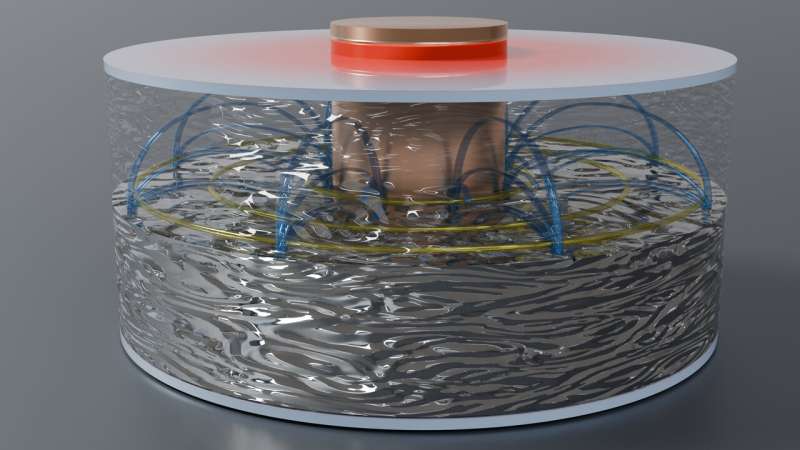by Bob Yirka , Phys.org

A trio of physicists at Sorbonne Université, in France, has observed a thermoelectric effect between two liquid materials for the first time. In their study, published in Proceedings of the National Academy of Sciences, Marlone Vernet, Stephan Fauve and Christophe Gissinger put two types of liquid metals together at room temperature and subjected them to a heat gradient.
Scientists have known for many years that thermoelectric devices can convert thermal energy into electricity and vice versa. Such thermoelectric effects have been seen in the interfaces between two solids and between solids and liquids—but until now, never between two liquids. In this new effort, the researchers built an environment conducive to such an event and tested it in their lab.
The environment consisted of a cylinder with another smaller cylinder at its center. The researchers poured liquid mercury into the outer cylinder and then poured liquid gallium on top of it. The gallium floated because it was lighter. They then added a chilling device to cool the outer walls of the outer cylinder and a heating device to warm the walls of the inner cylinder.
This resulted in a temperature gradient between the two metals. The team then inserted a wire into the outer cylinder to the place where the two metals met—the other end was connected to an electricity measuring device.
The researchers found that the addition of a temperature gradient led to a thermoelectric effect at the interface between the two liquid metals. They also found that it was turbulent—the current ran in a loop from a hot part of the cylinder to the cold part. Further testing showed that there were multiple loops. They also found places in the interface where no electricity was generated, which does not happen in thermoelectric effects between solids, they noted.

The researchers suggest that the reason such thermoelectric effects have not been observed before is that no one was looking for them. They also note that their findings may have implications for new kinds of battery development.

